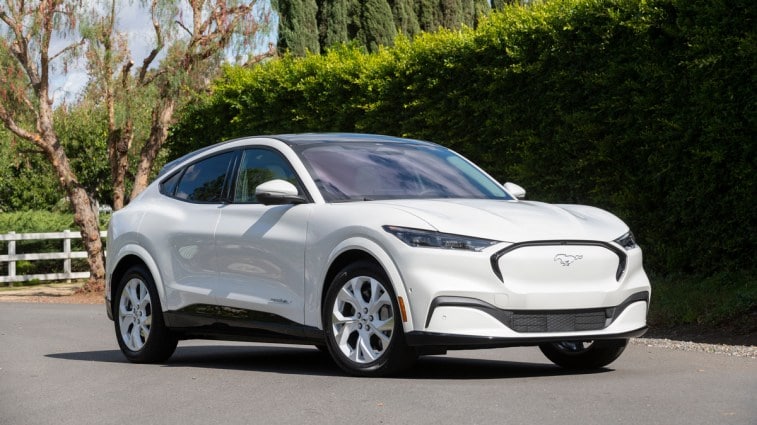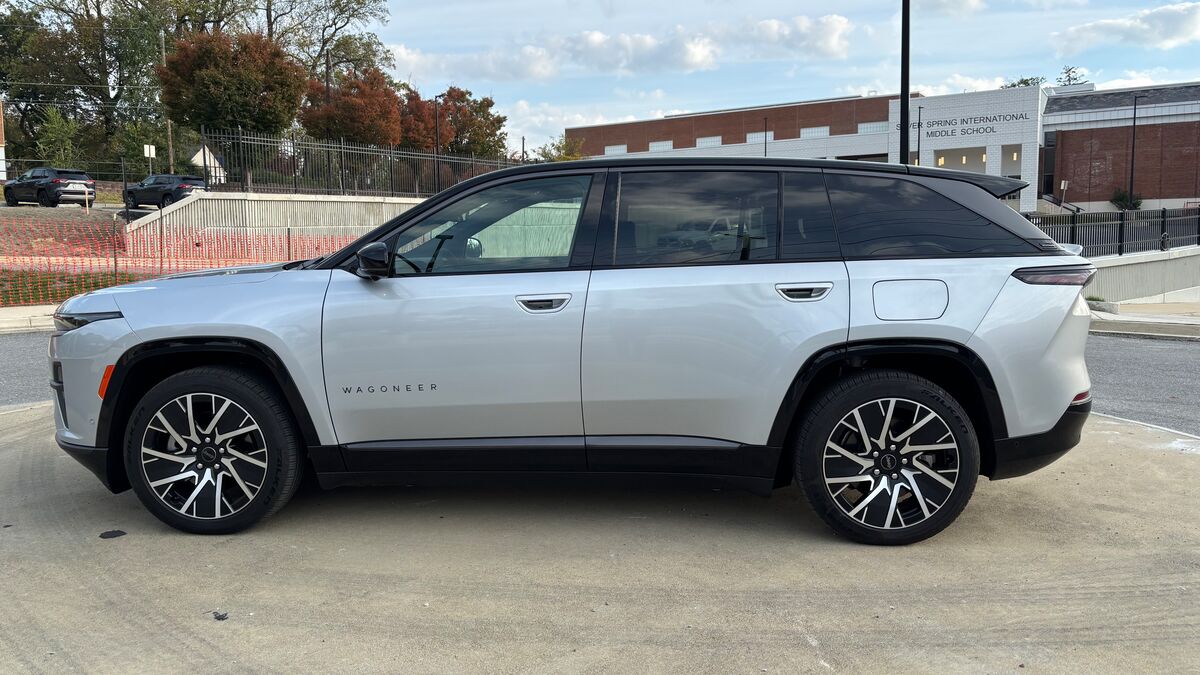A headline in the New York Times over the weekend included surprising news. “Electric Vehicles Could Match Gasoline Cars on Price This Year,” it read. Is the idea realistic?
The automotive industry is divided over the idea. And government policies that could affect it are in flux in the early months of 2023, making it hard to confirm.
Times business reporter Jack Ewing writes, “Increased competition, government incentives, and falling prices for lithium and other battery materials are making electric vehicles noticeably more affordable.”
He points to several recent rounds of price cuts. Tesla cut prices across its lineup in January. Ford answered with a quick price cut on its Mustang Mach-E EV, and luxury EV builder Lucid answered with its own price cut.
The Times also points out that Chevrolet hopes to sell its upcoming 2024 Equinox EV for around $30,000 – not much more than a comparably-equipped gas-powered Equinox. If the Equinox EV qualifies for government EV tax incentives, an electric edition could theoretically cost less than its gasoline equivalent.
Related – How Do Electric Car Tax Credits Work?
Some Industry Executives Less Bullish
Most auto industry leaders believe EVs will reach price parity with gas-powered cars. But many are less bullish than the Times.
Volvo is in the process of replacing its gas-powered lineup with EVs. The company has promised to sell an all-electric lineup by 2030, and replace most of its existing models with electric equivalents by 2026.
CEO Jack Rowan has predicted that EVs will reach price parity by 2025.
Luca de Meo, CEO of global automotive giant Renault, meanwhile, told reporters at the Paris Motor Show last fall, “I do not see this parity getting close.”
A 2021 analysis from Bloomberg New Energy Finance predicted that “Electric vehicles should be cheaper to buy on average than combustion vehicles in about five years, without subsidies” as economies of scale make production cheaper.
Tax Credits, Supply Lines Complicate the Question
Much of the New York Times’ argument centers on a federal EV tax credit. The Times explains, “Major impetus for the price cuts came from the Inflation Reduction Act, legislation passed by Democrats in Congress last year that provides tax credits of up to $7,500 for electric car buyers.”
That tax rebate is far more complicated than it seems, which is driving much of the fluctuation in electric car prices. Tesla’s tax cuts may be been triggered by an IRS decision that classified the company’s best-selling vehicle, the Model Y SUV, as a sedan. The tax credit law lets buyers claim a $7,500 tax rebate on electric sedans priced at $55,000 and under, and SUVs priced at $80,000 and under.
When the IRS called the Model Y a sedan, Tesla cut its price to fit under the lower limit.
The IRS later reversed itself, calling the Model Y an SUV after all. Tesla immediately began raising prices again. That initial price increase wasn’t enough to erase the cut. But the company has a history of raising prices frequently – it increased prices on some models ten times in 2022.
Now that the company knows it doesn’t need to keep Model Y prices low to help buyers qualify for tax credits, they may creep up over a period of several months.
Those tax credits could also disappear quickly.
The same law that created them modifies them quickly. The law requires automakers to restrict battery mineral imports from China and replace them with minerals mined in the U.S. or by major trade partners. That requirement is scheduled to kick in in March, though the U.S. Treasury Department may choose to delay it.
Volatility Disrupts Industry
The Alliance for Automotive Innovation, a major industry trade group, has claimed that no EV can meet the mineral requirements. The industry is scrambling to rebuild supply lines to account for the new rules. But if the Treasury Department enacts the rules in March as scheduled, many or most EVs could lose the credits instantly.
Supply chain volatility also makes it hard to predict when EV prices will come down. Renault’s de Meo explains, “I can come up with better battery chemistry and better power electronics, but these gains would be erased when the price of cobalt doubles in just six months.”
Russia’s war in Ukraine, trade disputes between the U.S. and China, and possible mining law changes in Chile have all caused prices of battery minerals to fluctuate in recent months. An uncertain global political situation could leave them volatile for years to come.
We can’t even confidently say which mineral prices to watch. Most of today’s EVs use cobalt-heavy lithium-ion batteries like those found in cell phones. But many manufacturers are working to develop more efficient solid-state batteries that use different minerals. If those projects bear fruit, all the same disputes could arise over a different part of the periodic table.
Bait-and-Switch Pricing, Markups Are Also Threats
Automakers are attempting to bring the prices of electric cars down because the headlines are good for business. But those prices may not stick.
When Ford started production of its all-electric F-150 Lightning pickup last April, the base Pro model cost under $40,000. Less than one year later, the same model starts at nearly $56,000.
Tesla CEO Elon Musk initially promised the company’s upcoming Cybertruck electric pickup would start under $40,000 as well. He now says that target is out of reach.
And that assumes you can find an electric vehicle. Most current EV models are sold before they reach dealership lots. That allows dealers to place significant markups on them.
The More You Build Something, The Cheaper It Gets
Inevitably, price parity will come. As manufacturers build more EV batteries, the cost of building them will come down.
EVs may even promise cheaper construction costs over time. Most current EVs are built on skateboard-like platforms that combine batteries, electric motors, steering, and suspension parts into a single, nearly flat platform. Engineers can scale them up or down to build vehicles of different sizes.
Once they have successfully designed the platform, they can modify it to build everything from full-size pickups to compact cars. “Auto executives say they are finding it is easier and cheaper to design and build new electric models than gasoline-powered ones,” the Times explains.
GM, for instance, plans EVs ranging from the small Equinox EV to the huge, ultra-luxury Cadillac Celestiq (at 10 times its price), all built on its Ultium skateboard platform.
That promises huge cost savings.
But as production costs go down, government incentives will likely disappear. Political support for lowering EV costs will probably fade when manufacturers don’t need the help.
All of which makes pinpointing the moment prices stabilize a fraught project.








